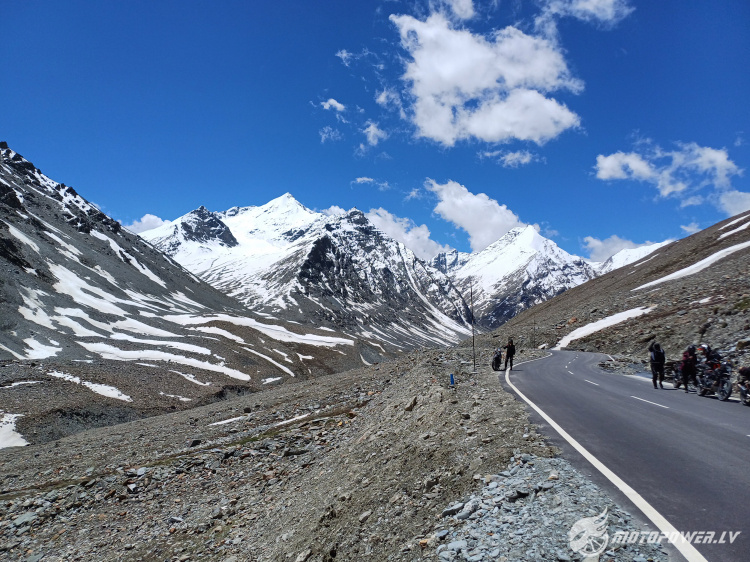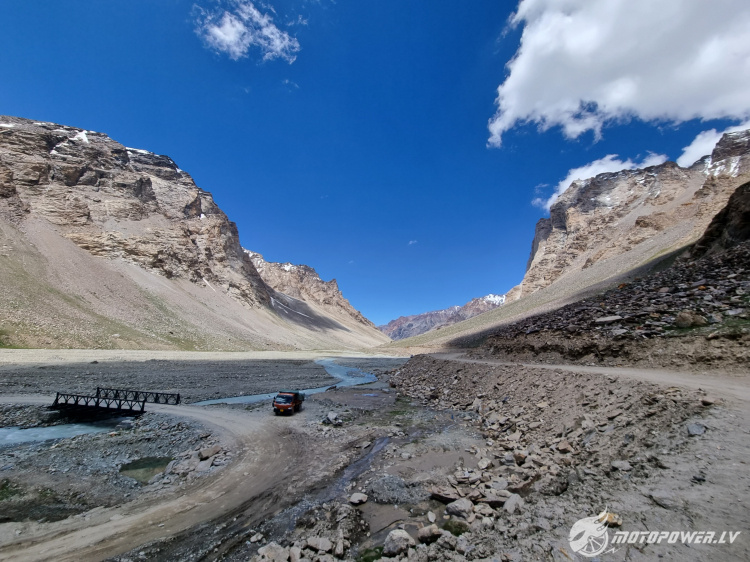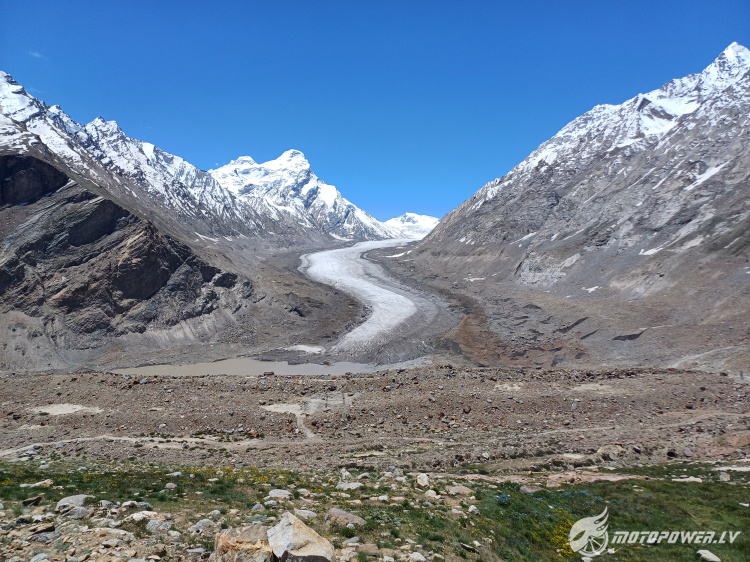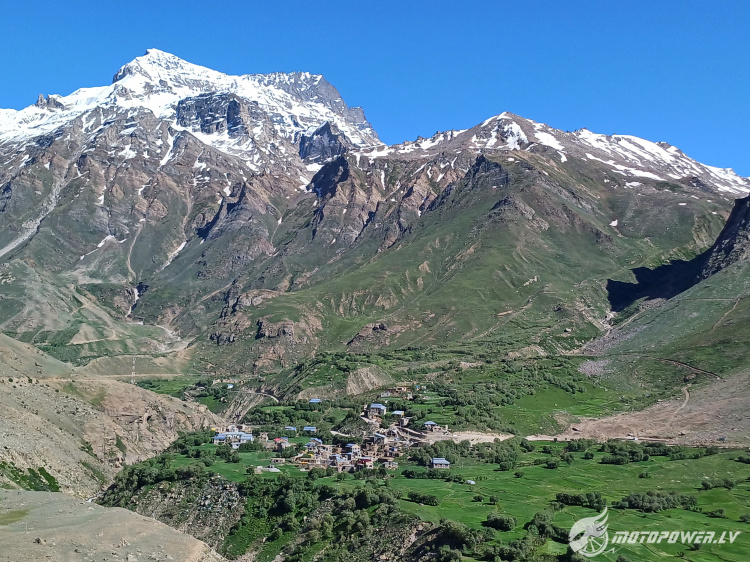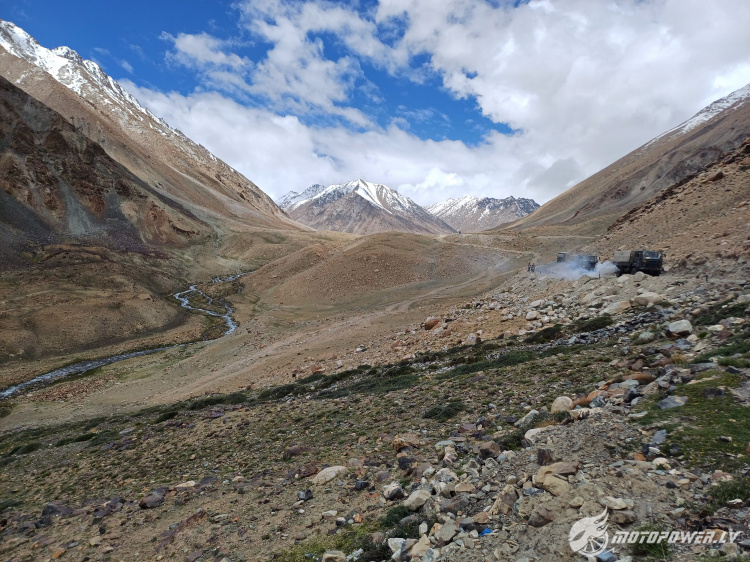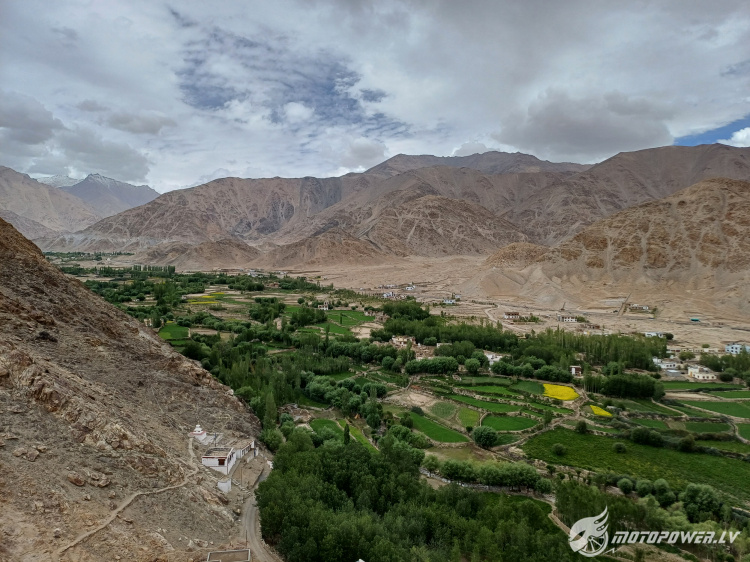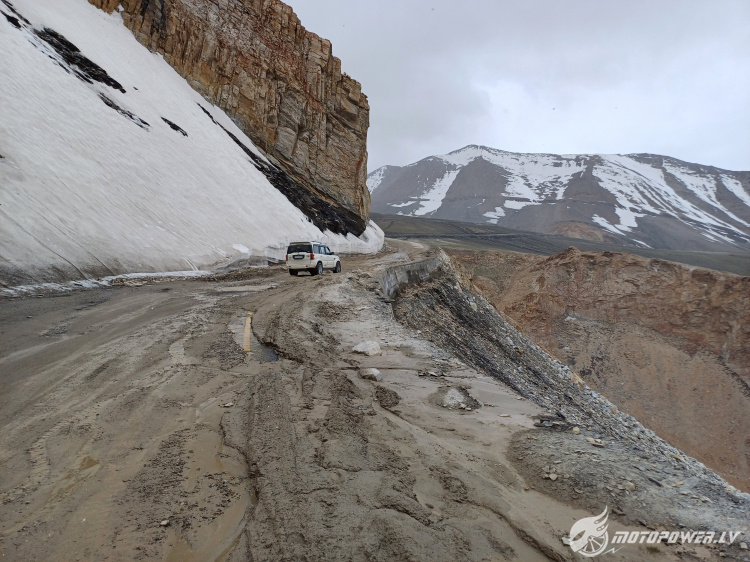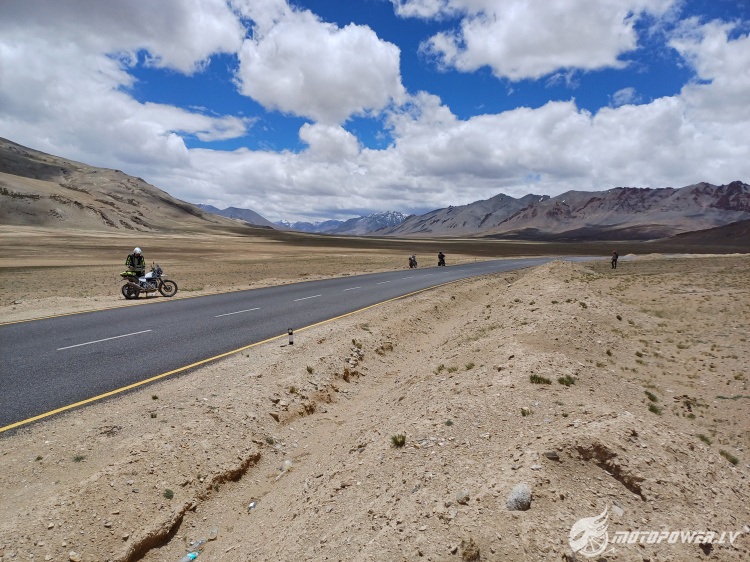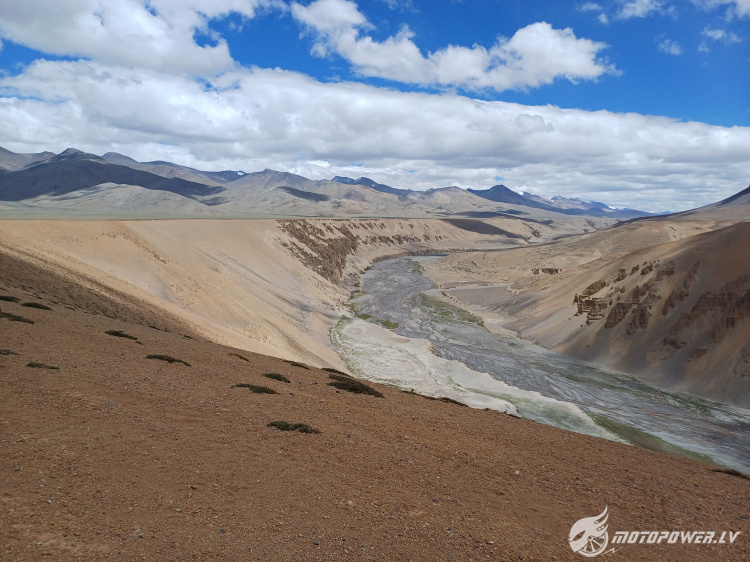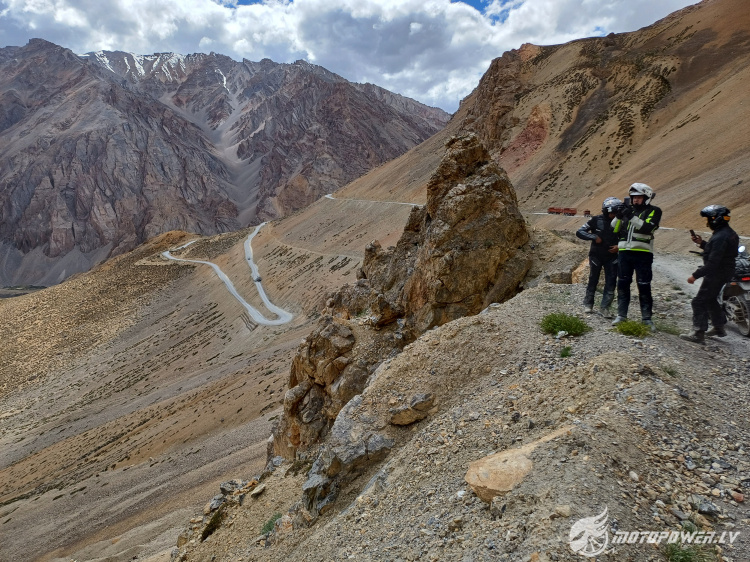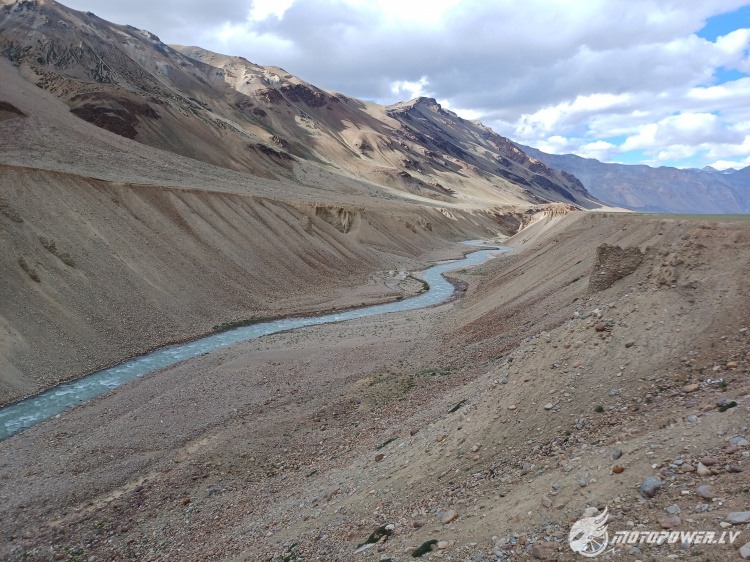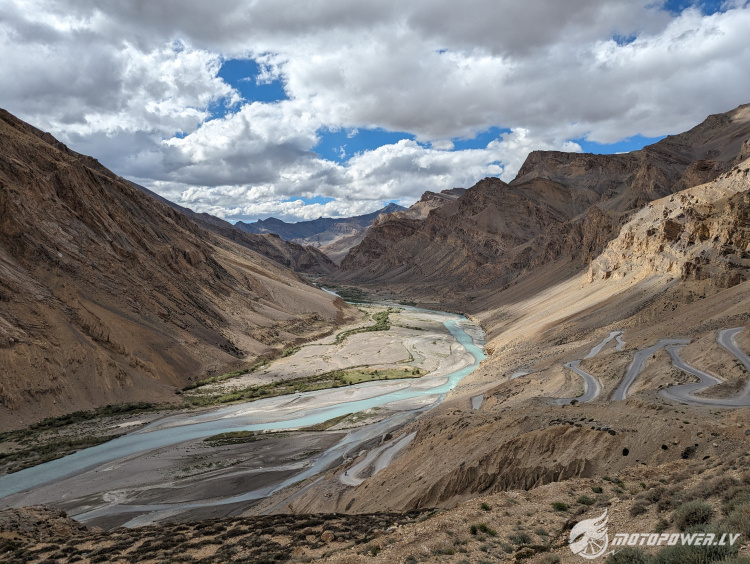Online
Pašreiz MOTOpower skatās 1 viesi un 1 reģistrēti lietotāji.
Ienākt MOTOpower
Ar Himalajieti Himalajos | |
| Pievienota: 21. Jul 2023, 18:42 | Citas galerijas no lietotāja Gasjs |
The story is presented both in Latvian and English as I have readers requiring presence of both languages.
Šajā vietnē ir bijuši daudz dažādu aprakstu motoceļojumiem. Nu jau nevienu nepārsteigsi ar motoceļojumu par Eiropu. Parādās arī pa kādam ceļojumam pa Ziemeļāfriku. Vieni brauc pa šosejām, citi pa neceļiem, citi pa jebko pa vidu. Vieni nakšņo 5 zvaigžņu viesnīcās, citi autobusu pieturās un atkal citi kaut kur pa vidu. Viss tas ir bijis, viss tas ir aprakstīts.
Kas šajā lapā nav bijis gana labi aprakstīts, ir organizētas mototūres. Tā kā man vienā tādā tikko izdevās pabūt, nolēmu ielikt nelielu aprakstu. Šī nav reklāma, jo organizētām tūrēm ir savas priekšrocības un trūkumi. Ne visiem šāds ceļošanas veids var šķist piemērots. Ceru, ka šis apraksts, palīdzēs lasītājiem tikt skaidrībā, vai tāds pasākums ir priekš viņiem vai nav.
This site has stories regarding many different moto-tours. Any kind of European moto-tour can't surprise anyone. People have been around many places in different formats. Some ride highways, some ride dirt, some others anything in between. Some stay at luxury hotels, some in cardboard boxes, yet anothers in anything in between. All of this has been experienced by honoured members of this site, all of this has been described in one story or another.
Yet what this site lacks are descriptions of organized, group moto-tours. As I have just participated in one then I decided to put a short description of my experience. This is by no means a promotion as organized tours come with their shortcomings and advantages. In a nutshell it is not everyone's cup of tee. Hence this story to help the readers decide if such tours could be of any interest for them.
TŪRE / TOUR
Mototūre tika organizēta pa maziem un lieliem ceļiem. Organizatori bieži lietoja terminu “offroad”, bet visur, kur braucām mēs, varēja izbraukt arī satiksmes autobuss. Pat tad, ja konkrētais ceļa posms nav atrodams GoogleMaps. Tādi mums bija vairāki. Vienīgais izņēmums bija svaigs akmeņu nogruvums uz šosejas, ko auto pievārēt nevarēja, bet moči izlavierēt gan. Tas gan nenozīmē, ka brauktuves varēja saukt par ceļu. Izbaudījām gan posmus ar fesh-fesh smiltīm (pūderi), gan ar ķieģeļa izmēra akmeņiem, smiltīm parastajām, brasliem pār strautiem, nežēlīgi izdangātiem zemes ceļiem, perfektu asfaltu. Tie “offroad” posmi nebija nekas īpaši sarežģīts, bet tomēr savu noguruma devu pienesa, īpaši, ja jānobrauc n-tās stundas karstā dienā ar vidējiem ātrumiem zem 20kmh.
Vēl interesanti, ka šie ceļi ir pieejami 5-6 mēnešus gadā. Ziemā tur sasniegot tādi kvantumi, ka neviens pat nemēģina tīrīt un vietējie ciemi uz pusgadu ir izolācijā. Īpašs stāsts ir par putekļiem. Šo svētību mēs dabūjam tā, ka maz neliekās. Cieta rāvējslēdzēji un jebkādi citi kustīgi mehānismi, piemēram flip-up ķiverēs. Rāvējslēdzējus dabūjām tīrīt katru dienu, bet es tāpat pamanījos dažus piebeigt tā riktīgi, līdz galam.
The tour was organized on various kinds of roads. Organizers used term “offroad”, yet all stretches we did were doable by an ordinary bus. Even though at least one such stretch did not even appear on GoogleMaps. The only exception to the rule was main road that had just suffered a little rock slide. It was not drivable by car by bikes could get through. Even though all stretches were drivable by a bus, it does not mean that they always could be called “road”. We experienced fesh-fesh sand (powder), baby head stones, ordinary sand, water crossings, bloody awful gravel roads as well as perfect tarmac. There was nothing particularly technical, yet longer stretches of “offroad” were pretty tiresome. Especially if you spend full day with temperatures above +30 and average speed below 20kmh. Quite a lot of roads we were riding are accessible for no more than 5-6 months a year. During rest of the year it snows so heavily that noone even tries to clean the road. Local villages routinely go into half a year of isolation every year.
Dust deserves special mentioning. We've got oozes of this. All kind of mechanisms, including zippers suffered from it and had to be cleaned every day. Even with cleaning some of my zippers and mechanisms on flip-up helmet stopped working altogether.
Mūsu maršrutā ietilpa vairākas kalnu pārejas tuvu pie un virs 5km virs jūras līmeņa.
Ņemot vērā augstkalnus, laikapstākļi ir diezgan neprognozējami pat vasarā. Izbaudījām gan +39 karstumu, gan snigšanu. Kārtīgu lietu piedzīvojām tikai pēdējā dienā, bet tad gan dabūjām trūkties. Saskārāmies gan ar akmens nogruvumiem, gan dubļu lavīnas nonestu ceļa posmu. Vēlāk ziņās lasījām, ka esot bijuši rekordlielas lietavas un mūsu reģionā bija kaudze ar bloķētiem ceļiem un bojā gājušajiem. Mēs tikām laukā pašā pēdējā mirklī. Viens grupas dalībnieks pēc tūres palika Manali vienu nakti ilgāk un vairs netika projām savādāk, kā ar viena vietējā mehāniķa palīdzību divatā uz motorollera.
Our route led over several mountain passes close to and several above altitude of 5km.
Weather is quite unpredictable in this area even in summer. We experienced both temperatures up to +39 as well as some snow. There was some proper rain on our last day of riding, which caused several rock-slides as well as stretch of the road devastated by a mud-avalanche. Later in the news it was published that there were record quantities of rain in these days causing number of road blockages and actual mortalities. We got out on the very last moment. One of our group stayed in Manali for just another night and only way for him to get to Delhi was to make part of the route by scooter as buses could not get through.
Grupa bija nežēlīgi liela – vairāk nekā 20 moču. Laikam ar mazāku daudzumu neatmaksājas dzīt gidu uz moča plus pavadošo auto. Tā kā braucēju līmenis bija dažāds, tad diezgan daudz laika iznāca pavadīt gaidot atpalicējus. Tomēr jau pēc otrās (smagākās) dienas sākās braucēju pašatsijāšanās. Nezinu, kā organizatori ar to bardaku tika galā, bet pēdējās dienās mēs bijām viena 11 moču (6 lietuvieši, 2 latvieši, 2 indiešu izcelsmes kenijieši un viens dulls indiešu pāris) grupa, kas spēja apmēram turēties kopā. Kur un kā brauca pārējie, nav ne jausmas.
The group was humongously large – more than 20 bikes. Apparently it does not make a business case to have a small group with guide on a separate bike, plus group of mechanics on support car. The riding competence differed among the riders. As a consequence we spent quite a lot of time waiting for slower riders to catch up. Interestingly enough number of riders become smaller after the second (the hardest) day. I don't know how organizers managed all the mess but by end of the tour there was one group of 11 bikes (6 Lithuanians, 2 Latvians, 2 guys from Kenya, 1 couple from India) who managed to stay relatively close. Where rest of the group disappeared, what routes they took, I have no idea, nor have I any interest.
Mums baltiešiem šī tūre patika. Himalaji ir salīdzinoši mazapdzīvots gals Indijā un tur lielākoties var iztikt bez milzu drūzmas. Komforta ziņā daudz kur nācās pieciest kompromisus, bet ne jau gulēt pēļos mēs braucām. Faktiski ir 3 jēdzīgas alternatīvas, kā šādu ceļojumu veikt – 1) grupā, kā mēs; 2) privātā grupā; 3) pašorganizēti. Pirmais variants ir pietiekami lēts, nav daudz par ko satraukties, bet jāpiecieš bars un gaidīšana. Otrais variants varētu iznākt jūtami dārgāks, bet tad nav jāpiecieš bars un gaidīšana. Trešais variants varētu būt pat vislētākais un savam baram piemērotākais. Bet tad jādomā, kā transportēt bagāžu (mums visa bagāža ceļoja līdzi pavadošajā auto) un jāspēj tikt galā ar sīkākām ķibelēm (starp baltiešiem vien mēs pieredzējām 3 caurdurtas riepas). Jāņem vērā, ka Himalaju galā vietām nav nekādu mobilo sakaru un vietējie diži daudz angliski nerunā.
Kāpjot lidmašīnā atpakaļ uz Eiropu, satiku 3 poļus, kuri bija izvēlējušies 3-o variantu. Izskatījās aplam apmierināti. Dziļi detaļās negāju, bet sapratu, ka par močiem maksājuši ~20EUR/dienā par moci. Un moto izīrētājs arī noorganizējis visas nepieciešamās atļaujas kontrolpunktiem. Ar lejuplādētām kartēm (Osmand, Google maps) pietiek, lai ceļu atrastu.
Overall, we, Baltic guys, enjoyed the tour. Himalayas are relatively scarcely populated, so there is a good chance to avoid crowds. From comfort perspective we were forced to accept some compromises, but this was known in advance and none of us expected 5-star luxury hotels.
There are some 3 main alternatives how to organize such a trip – 1) participating in an organized group, as we did; 2) organizing a private group; 3) self-organized trip. The first alternative is quite cheap, worry-free, yet one needs to accept some crowd and lot of waiting. The second alternative might be a tad more expensive, yet then one would have their own crowd and potentially no waiting. The third option might be actually the cheapest but one needs to plan how to carry all the luggage (our luggage was carried by the support car) and how to deal with minor technical issues. We experienced 3 punctures just among 8 Baltic guys. It must also be noted that there are long stretches without any mobile coverage and locals don't always speak English, which adds some risk factors to self-organized tours. When we were boarding return flight, I met 3 Polish guys who were returning from self-organized trip. They seemed quite happy. I did not torture them with questions too much, but I found out that they paid approximately 20EUR per bike per day, moto renters helped them to prepare all the paper work for control points. They used downloaded maps on Osmand and GoogleMaps for navigation.
Vairāk tehnisku detaļu te / More information regarding the tour here: https://himalayanrider.com/zansker-motorbike-trip-delhi-to-delhi/
Mūsu moto tūre gan sākās, gan beidzās Manali.
Our moto tour both started and ended at Manali.
PAR MOCI / REGARDING THE BIKE
Royal Enfield Himalayan
Single cylinder, 4-stroke,
1-cilindrs, 4-taktis,
411cc, 24hp, 32Nm
Kopumā mocītis ir diezgan paprasts, ar izteiktu jaudas trūkumu. Augstkalnēs atradām situācijas, kad pa gludu asfaltu, bez kāpuma, bet ar pretvēju no tā pepelaca nevarēja izspiest vairāk par 80kmh. Bija gan arī sekcijas, kur spidometrā redzējām 120kmh, bet tad jau likās, ka lidojam. Serpentīnos bieži 2-ajā pārnesumā nevilka augšup, nācās mest 1-ajā.
Tajā pašā laikā mocis ir ārkārtīgi viegli manevrējams gan gaitā, gan airējoties pa smiltīm. Piemērots augstumā īsākiem cilvēkiem. Aparātu praktiski nav iespējams pārgāzēt nekādos apstākļos. Varētu noderēt ļoti nepretenziozai, ne pārāk ātrai braukšanai jebkādos apstākļos. Indijā uz vietas viš maksā nedaudz virs 2K EUR. Tik daudz par viņu arī var maksāt, bet ne mūsu platuma grādu 5.4K EUR.
In general the bike is very un-pretencious and powerless. We managed to find situations in highlands where due to opposite winds one can't squeeze more than 80kmh from the bike. Yet in other situations we've managed to see 120kmh on the speedo, which came together with sensation of space-flight. The bike struggled to ride in 2nd gear in tight uphill corners, one needs to drop down to 1st.
At the same time the bike is very easy to manoeuvre or even paddle in trickier situations (especially when moment is lost, which tends to happen). It is quite impossible to do anything stupid with too much gas, as there is no such thing as too much gas on it. The bike is very approachable to shorter people.
Basically the bike is suitable for very un-pretencious and non-fast riding in any conditions apart from technical ones where power is needed. The bike costs a bit above 2k EUR in India, which is fair value for money. It is definitely not worth 5.4k EUR their asking for the bike here in Europe.
IZMAKSAS / COSTS
Neizbēgami sagaidu jautājumus, cik tad šāds blandījiens pa pasauli izmaksā. Jāatbild, ka neko daudz vairāk kā normāls eiro-trips. Tādā eiro-tripā ir jārēķina vismaz 100eur/dienā, ieskaitot naktsmājas ne teltī, degvielu, ēšanu utml.
I quite expect a question regarding costs. Actually the costs are not much higher than ordinary bike trip in Europe. These days one would need to consider at least 100eur/day when travelling in Europe.
Lidojums Rīga – Deli un atpakaļ / Return Flight Riga – Delhi: 700EUR
Mototūre (ieskaitot moci, degvielu, gidu, nakstmājas, tehnisko atbalstu, 2 ēdināšanas dienā, buss Deli – Manali) / Moto tour (including bike, fuel, accomodation, support car, 2x meals per day, bus Delhi – Manala): 600EUR
Visādas citādas izmaksas / Various other costs: 300 EUR
Kopā / Total: 1600EUR
IESPĒJAMS NODERĪGI FAKTI / POTENTIALLY USEFUL ADVICE
Indijā, it sevišķi ārpus lielpilsētām ar maksājumu kartēm ir bēdīgi. Gādājiet skaidru naudu
Payment cards are not very useful in India, especially outside of big cities. Get some cash
Poļu aviokompānija LOT ekonomklasē atļauj ņemt ķiveri un rokas bagāžu (2 vienības).
Polish carrier LOT allows to take hand luggage and helmet on board even in economy
Taxi vajadzībām lietojām Uber, tas strādā. Norēķini gan tikai skaidrā naudā.
For taxi services we used Uber, that works. Payments mostly in cash.
Lai izdzīvotu augstumā, visi Baltieši profilaksei ēda medikamentus. Tos var izrakstīt katrs ģimenes ārsts. Nevienam no Baltiešiem nebija problēmu ar augstumu, atskaitot fizisku nespēku.
To survive in high altitudes, everyone from our company took some medicine. The medicine can be subscribed by a doctor. None of Baltic guys experienced any health issues due to altitude, except for lack of physical energy.
Mūsu ceļojuma maršruts veda tuvu gan Pakistānas, gan Ķīnas pierobežai. Ar abām valstīm Indijai ir kašķis. Tāpēc savdabīgu drošības apsvērumu dēļ ir gan daudz kontrolpunktu, gan virkne mobilo operatoru nedarbojās. Mums bija vairāki posmi, kur bijām izolēti no sakariem uz vairākām dienām.
Our route led near borders of Pakistan and China. India has regular quarrels with both of these. Hence there are quite many control points and cell services are limited. We experienced situations that we were out of connection for several days in the row.
Pēc dažiem gadiem no mūsu brauktā “offroad” nekas nebūs palicis. Būs asfalts. Indija aktīvi investē ceļos, jo kaut kā ir jānodrošina iespēja ātri pārvietot armijas vienības un nodrošināt apgādi potenciālā konflikta zonā.
In a matter of few years majority of “offroad” ridden by us will be gone, will be replaced by tarmac. India is investing heavily in the road infrastructure in Himalayas. Afterall army needs possibility for swift relocation as well as reliable support lines close to area of potential conflict.
VISĀDAS BILDES / RANDOM PICS
Jūsu padevīgais / Yours truly
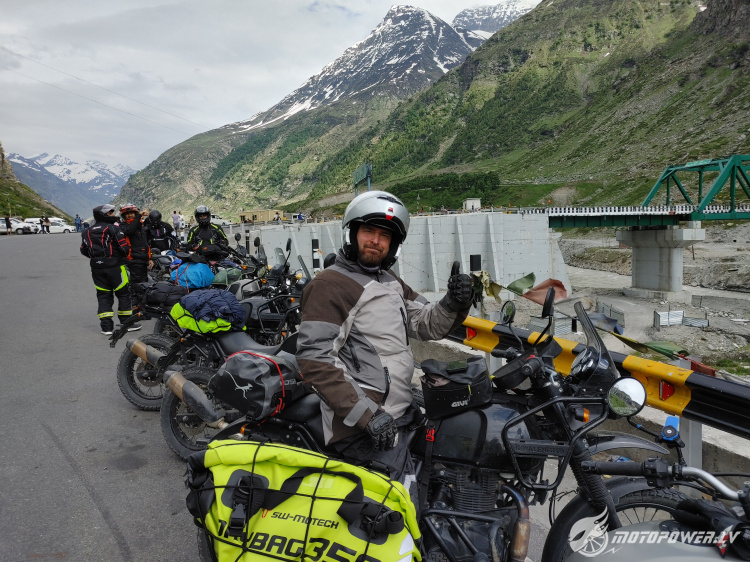
Manali
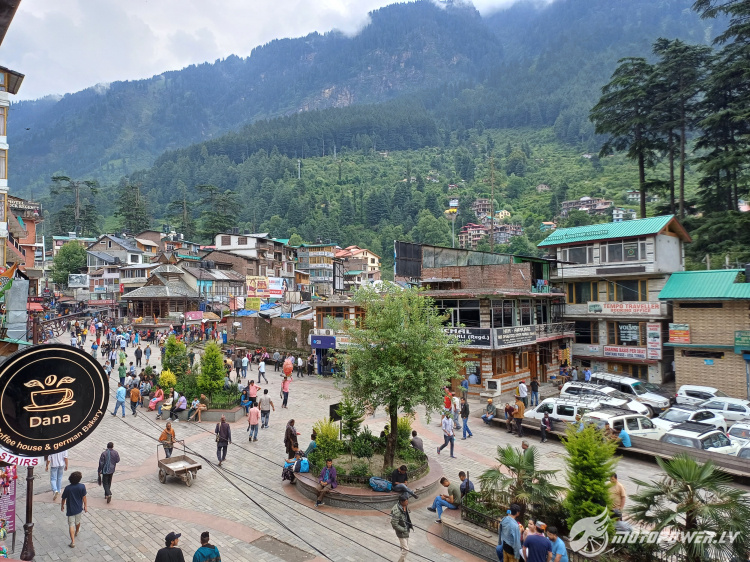
Leh miests / Leh from above
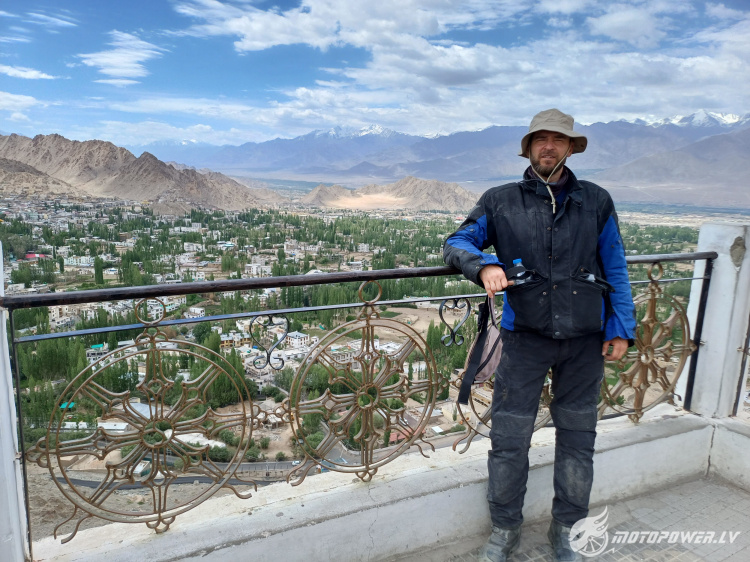
Pusdienu restorāns / Lunch site
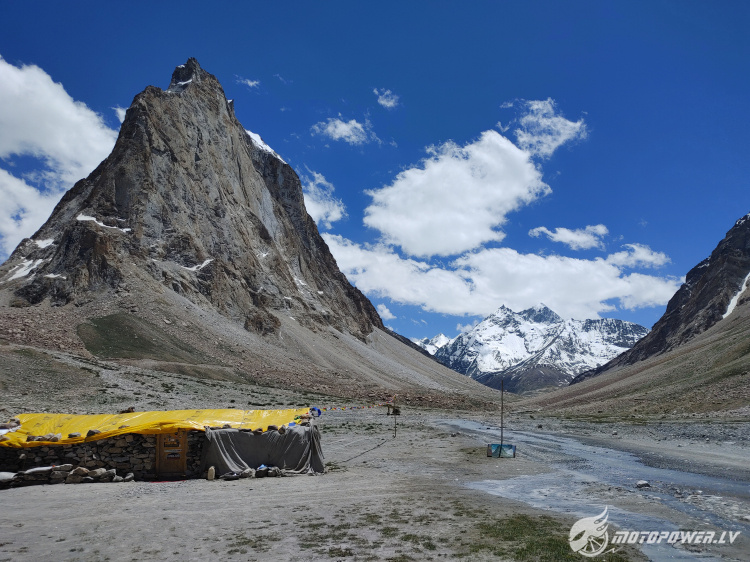
Pepelacs / Contraption
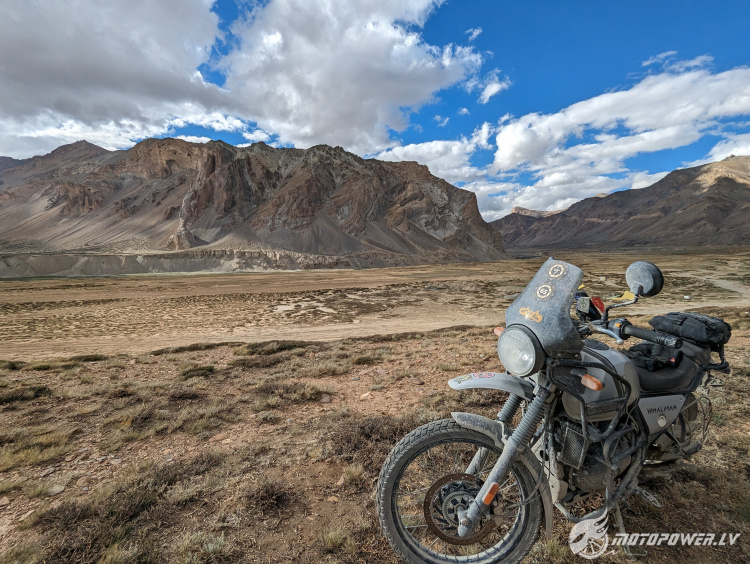
Baltiešu banda sataisījusies uz lietu / Baltic gentlemen ready for rain
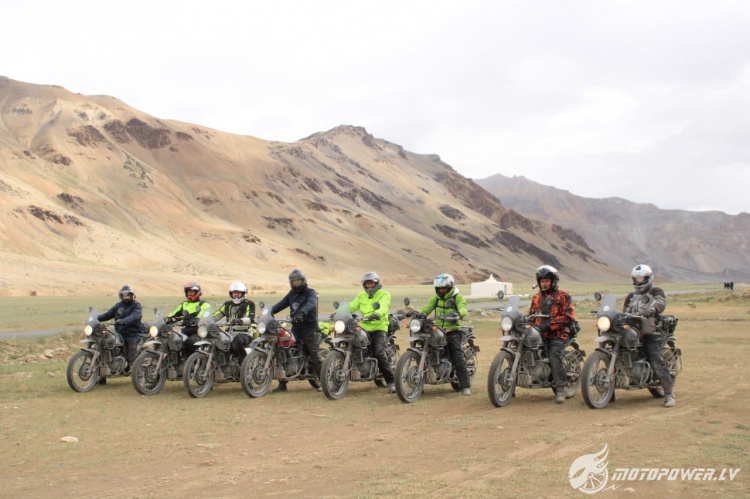
Teltis var būt arī šādas / Never imagined sleeping in tent could be like this
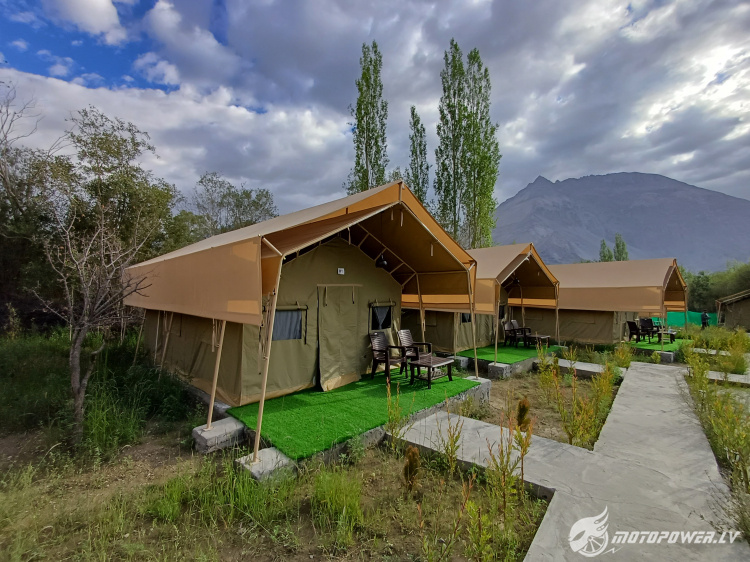
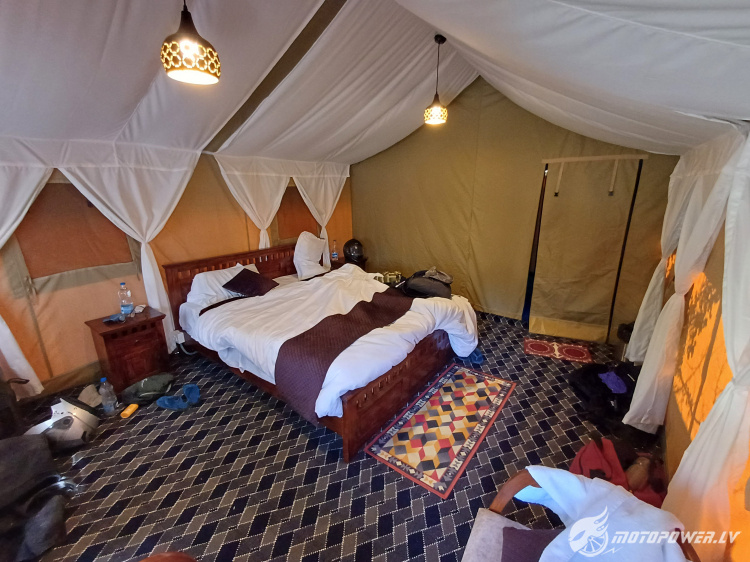
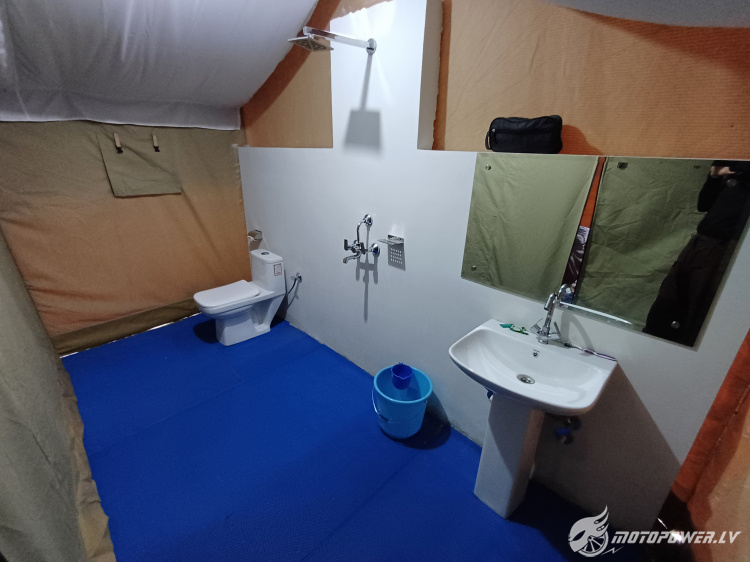
Sakrālais tūrisms / I bit of sacral tourism
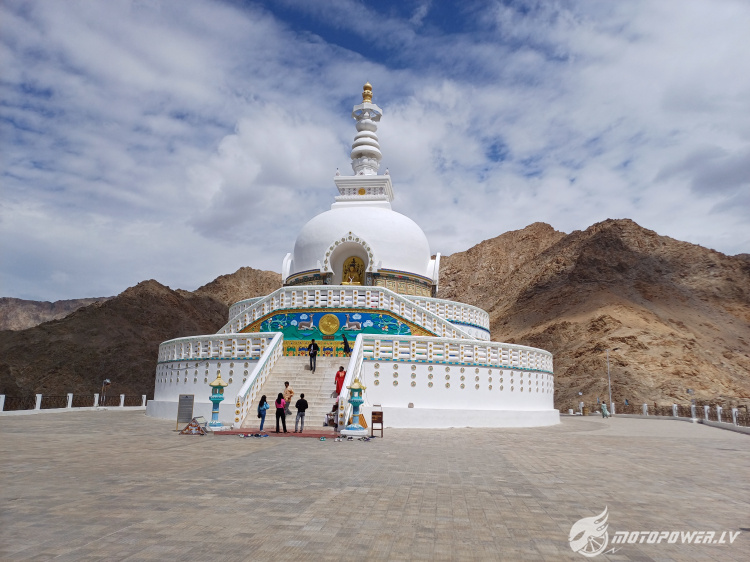
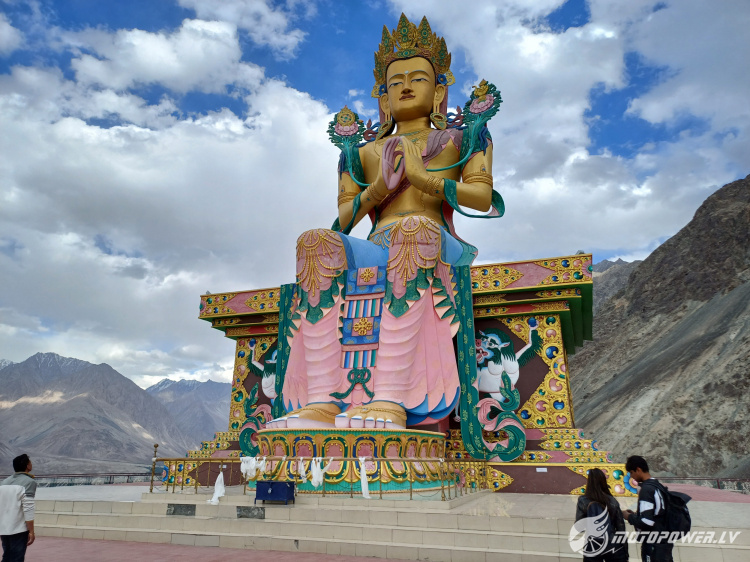
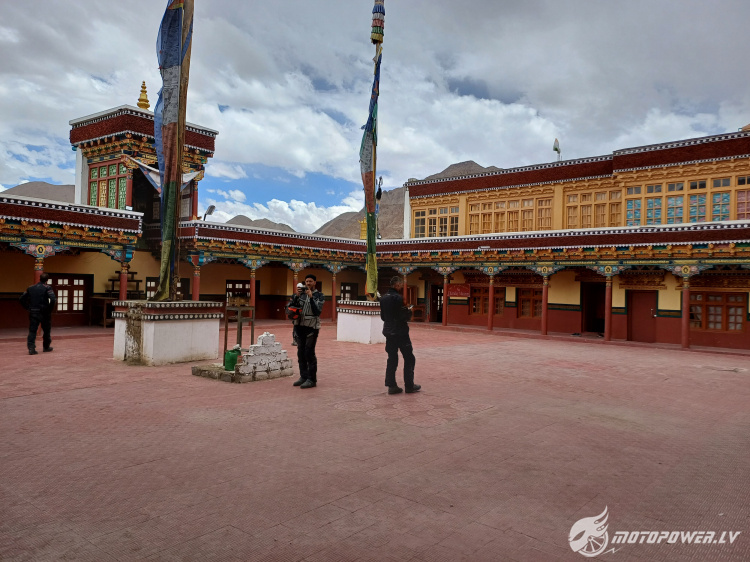
Puteklis / Dust
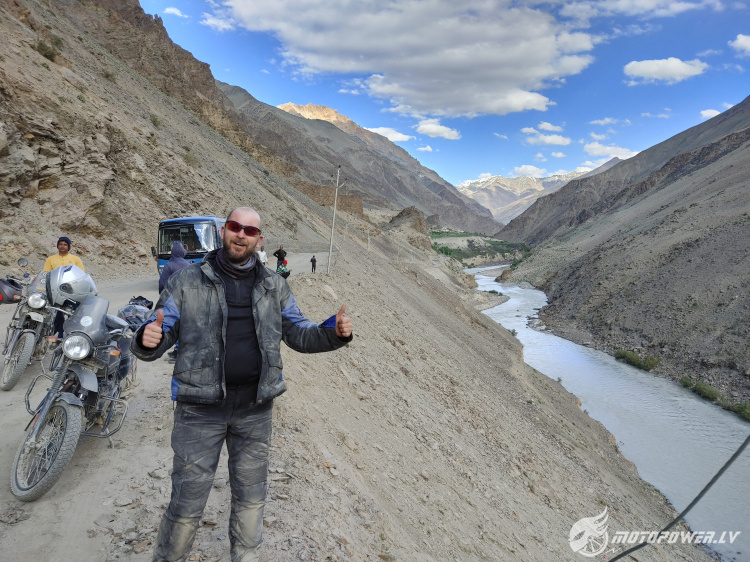
Tā gadās / Shit happens
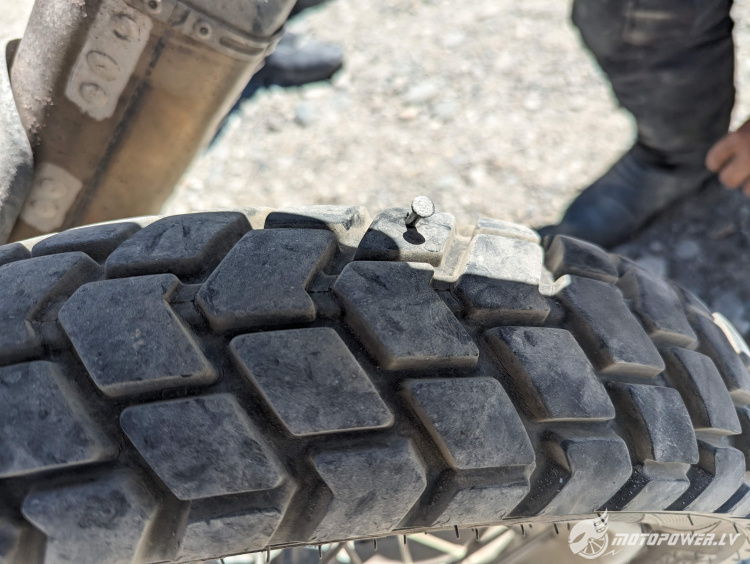
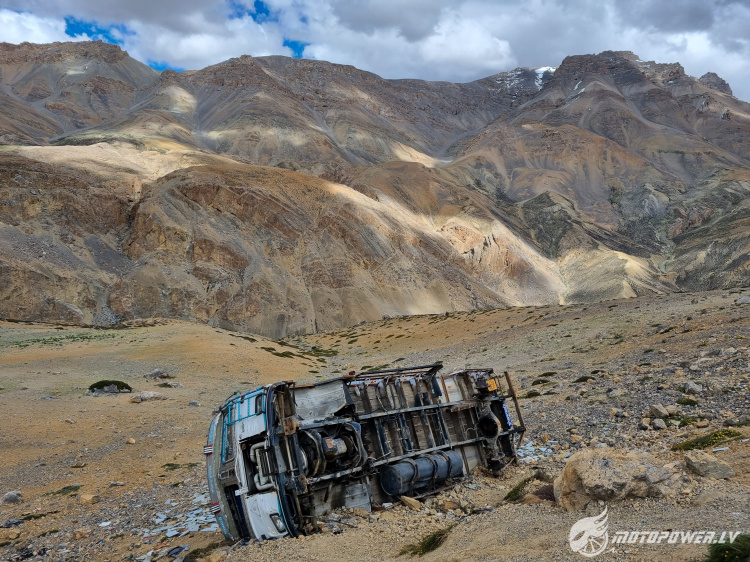
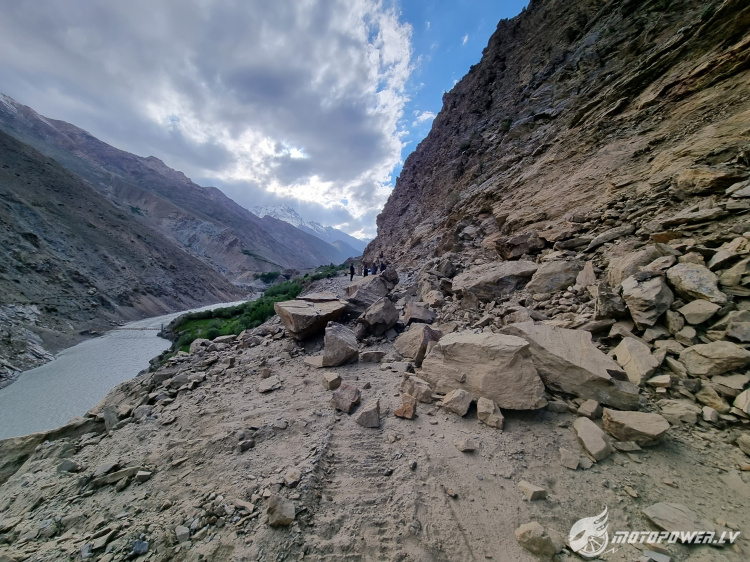
Kaut kādas pārejas / Some passes
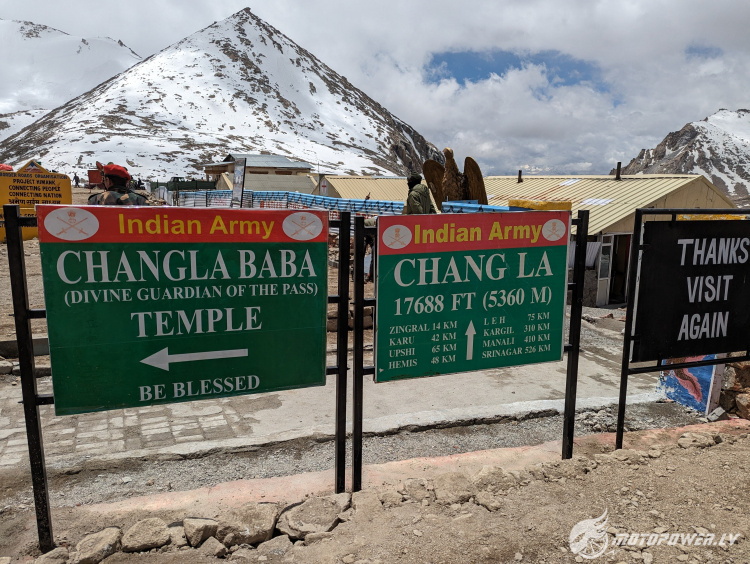
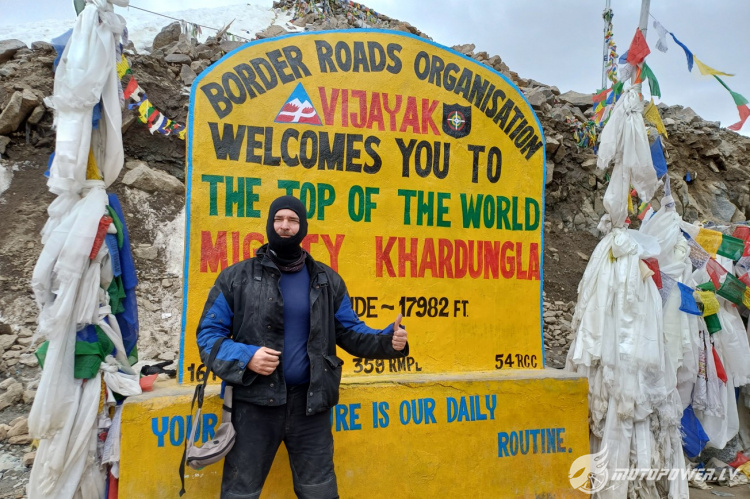
Nubra ieleja / Nubra valley
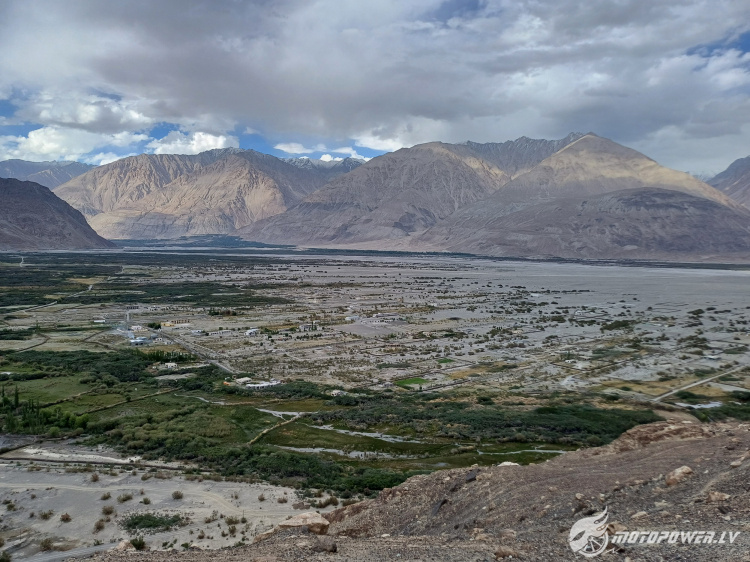
Pangong ezers (augstākais sālsezers pasaulē) / Pangong lake (highest saltwater lake
in th world)
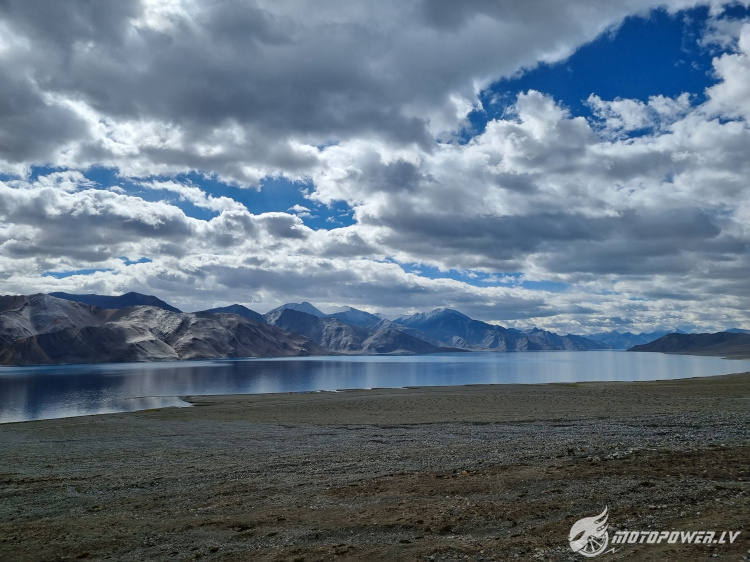
Kaut kāds sastrēgums pārejā / traffic jam on a pass
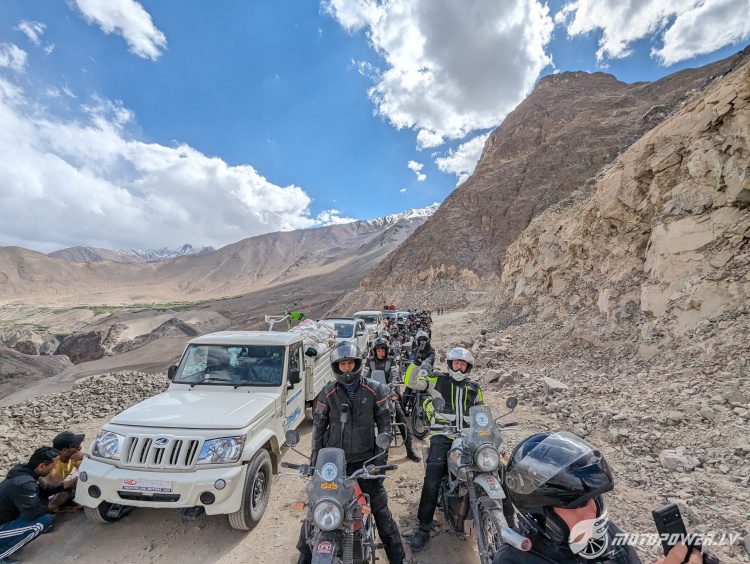
Ceļš un ainavas / Road and sceneries
